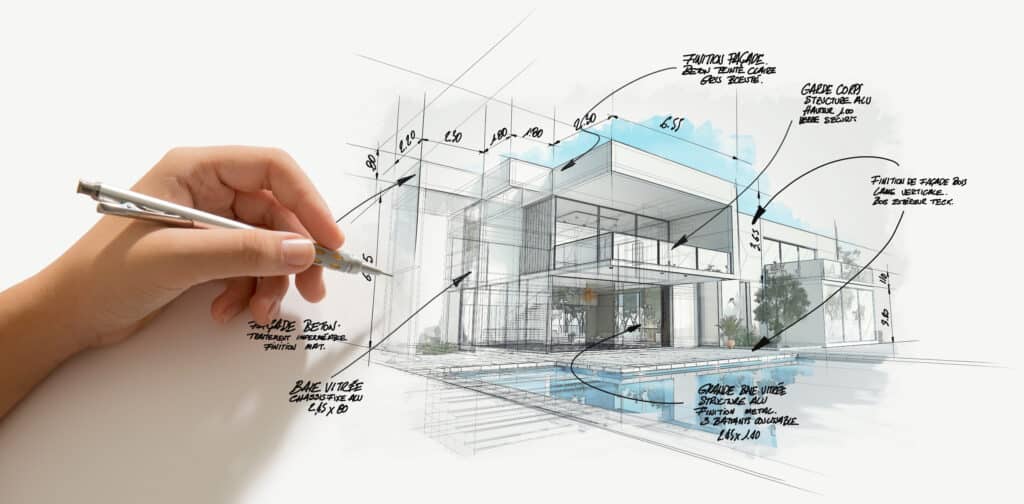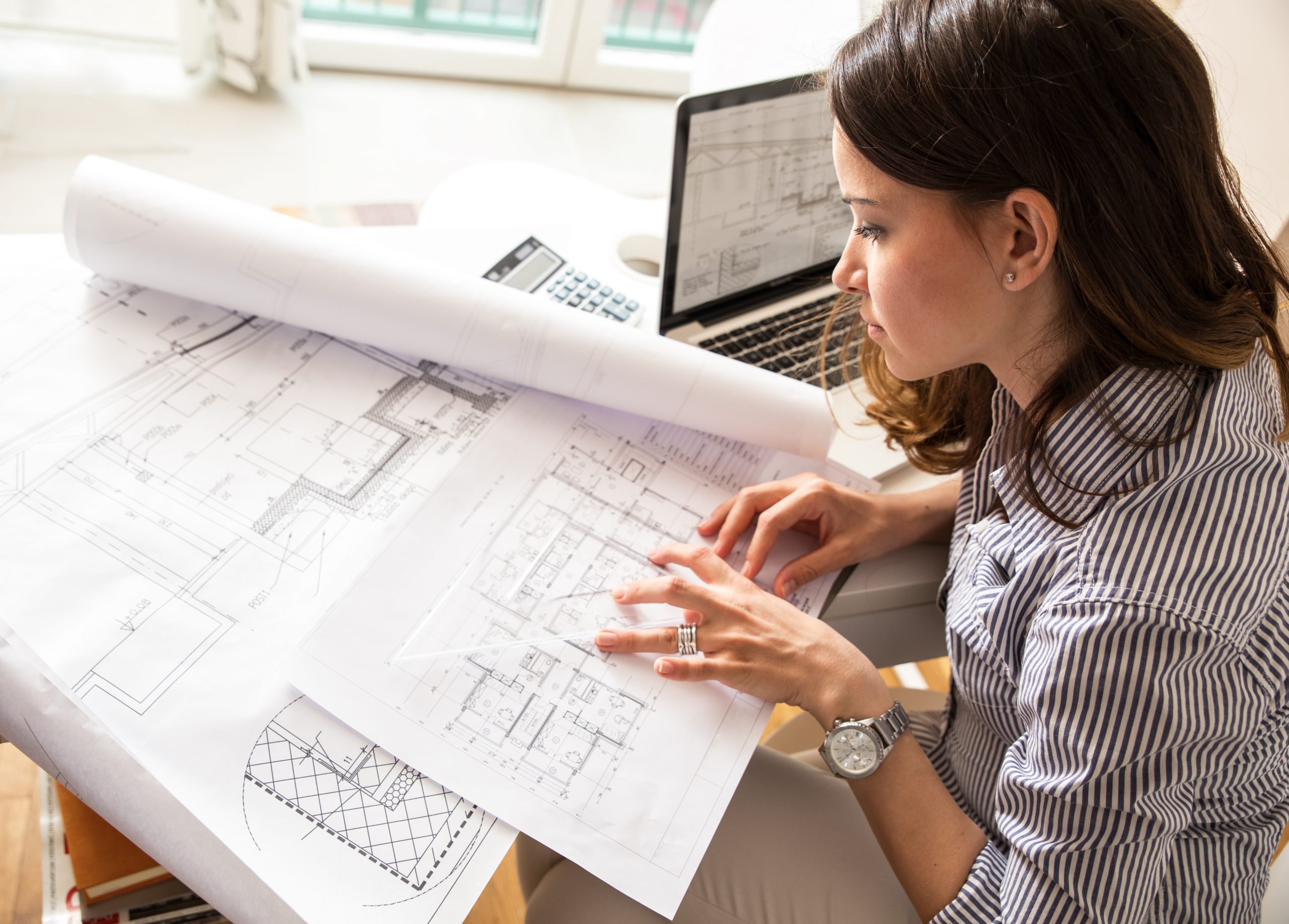Recognizing the Diverse Career Paths Available for Aspiring Architect
As an aspiring Architect, you have a globe of job courses waiting for you. Whether you're attracted to conventional design or the nuances of lasting layout, there's a particular niche that lines up with your passions.
Traditional Architecture: Designing Frameworks and structures
Conventional design concentrates on making structures and frameworks that blend functionality with aesthetic charm. As you explore this area, you'll appreciate the detailed equilibrium between type and objective. You'll learn to draw ideas from historical styles, incorporating components like proportion, products, and craftsmanship. Your layouts can reflect social heritage, showcasing local practices while fulfilling contemporary demands.
You'll create abilities in preparing, model-making, and website evaluation, enabling you to imagine and communicate your ideas efficiently. Involving with clients, you'll require to understand their vision and convert it into practical designs.
Furthermore, building codes and sustainability practices are important in your work, guaranteeing your frameworks are eco friendly and risk-free. As you grow in your profession, you'll locate chances in property, industrial, and even reconstruction tasks, each offering unique difficulties. Accepting standard architecture leads the way for a fulfilling profession that admires the past while forming the future.
Urban Planning: Forming Neighborhoods and Public Spaces
As an ambitious Architect, you can play an important function as an urban organizer, changing just how neighborhoods engage and function. By utilizing area engagement approaches, you'll assure that locals have a voice fit their setting. And also, integrating lasting style principles will certainly aid develop spaces that not just satisfy today's demands yet likewise protect the future.
Duty of Urban Planners
While lots of could believe of architects as the sole dreamers behind buildings, urban coordinators play an important duty in shaping the wider landscape of communities and public rooms. By collaborating with numerous stakeholders, you'll help create parks, transport systems, and property areas that promote social interaction and access. Your know-how in spatial design and area dynamics enables you to envision future growth while maintaining cultural heritage.
Neighborhood Involvement Approaches
Reliable community involvement methods are important for metropolitan coordinators to ensure that the voices of citizens are heard and valued in the planning process. To foster purposeful discussion, you ought to focus on open forums and workshops where community participants can express their ideas and issues. Use studies and social media sites to reach a wider audience, ensuring varied viewpoints are consisted of. Teaming up with regional companies can enhance count on and promote deeper links. It's essential to give clear information regarding proposed tasks and decision-making processes, enabling homeowners to feel informed and empowered. By proactively paying attention and including feedback, you'll create rooms that mirror the community's demands, inevitably resulting in even more lasting and effective metropolitan atmospheres. Accept transparency and constant dialogue for enduring impact.
Sustainable Design Concepts
When developing urban rooms, integrating lasting design concepts is crucial for developing environments that grow both ecologically and socially. You need to start by concentrating on energy effectiveness, utilizing products that decrease waste and advertise recycling. Consider incorporating environment-friendly areas, like parks and gardens, to boost biodiversity and boost air top quality. Promoting walkability and public transport can lessen dependence on vehicles, promoting a healthier community.
Designing with water conservation in mind is additionally crucial-- consider rain gardens and permeable surfaces to handle stormwater. Involving neighborhood members throughout the planning process assurances that the spaces you produce meet their needs and motivate social interaction. By welcoming these principles, you'll contribute to vivid, lasting metropolitan landscapes that benefit everyone.

Landscape Design: Developing Lasting Exterior Environments
As you explore landscape architecture, you'll uncover crucial style concepts that produce lovely and practical outside spaces. Lasting techniques play a crucial role in making sure these environments flourish while decreasing environmental influence. Plus, you'll find a variety of job possibilities that permit you to make a real distinction in exactly how individuals communicate with nature.
Style Principles in Landscape
Comprehending design concepts in landscape style is important for producing lasting outside environments that harmonize with nature. You'll need to contemplate components like equilibrium, percentage, and scale to ensure your layouts really feel natural and welcoming. Including native plants not only boosts biodiversity yet additionally reduces water use, making your landscape resistant. Think of the flow of space and just how individuals engage with it; paths and seating locations must invite expedition and leisure. Furthermore, focus on seasonal modifications, creating with materials that match the surroundings year-round (Architect). By focusing on sustainability and looks, you can create outside rooms that enhance the area and promote well-being. Embracing these concepts will certainly set a strong foundation for your job in landscape style.
Sustainable Practices Introduction
Lasting techniques in landscape design not only focus on aesthetic appeals but likewise focus on environmental health and wellness and source preservation. By integrating native plants, you improve biodiversity and lower the demand for chemical fertilizers and pesticides. Carrying out reliable irrigation systems aids save water and decreases drainage, safeguarding neighboring ecological communities. You can create rooms that advertise dirt health and wellness, such as making use of organic products and practicing permaculture concepts. Additionally, integrating eco-friendly facilities, like rain yards and permeable pavements, help in stormwater administration and decreases metropolitan warm. You contribute to a much healthier earth and provide spaces that foster area link when you create outdoor settings with sustainability in mind. Eventually, these practices ensure your designs benefit both people and the environment for many years ahead.
Profession Opportunities Expedition
With a solid foundation in sustainable practices, landscape style uses a variety of career courses that permit you to make a purposeful influence on the setting. Urban coordinators frequently team up with landscape designers to produce green rooms in urban setups, enhancing city livability. If you're passionate regarding education and learning, take into consideration becoming a landscape architecture educator, motivating future generations.
Sustainable Design: Concentrating On Eco-Friendly Practices
As you discover your occupation in style, accepting green methods can establish you apart in a competitive area. Lasting style concentrates on creating structures that lessen environmental impact while enhancing occupant well-being. By integrating eco-friendly products, energy-efficient systems, and sustainable structure methods, you'll add to a greener future.
Beginning by obtaining expertise of eco-friendly accreditations like LEED or BREEAM, which can reinforce your credentials. Think about exactly how all-natural light, ventilation, and thermal effectiveness can maximize style. Team up with designers and ecological professionals to introduce options that lower waste and save resources.
Don't fail to remember the importance of neighborhood participation-- interesting regional stakeholders can motivate designs that integrate with the atmosphere. As customers increasingly prioritize sustainability, your know-how in green practices will not just bring in jobs but additionally accomplish your passion for responsible style. Embrace this essential aspect of the career, and see your job thrive.
Historic Preservation: Safeguarding and Restoring Social Heritage
While you commence on your architectural trip, consider the vital official website duty of historic preservation in keeping our cultural heritage. This area concentrates on the security and remediation of substantial structures, websites, and structures that tell the tales of our past. By taking part in historic preservation, you'll aid safeguard the architectural heritage that shapes community identity.
As a historic conservation Architect, you'll assess historical importance and evaluate the problem of structures. You'll work very closely with conservationists and chroniclers to guarantee genuine remediation strategies are utilized. This occupation course permits you to blend creativity with study, enabling you to develop remedies that appreciate initial materials and craftsmanship.
Your work not only adds to sustainability by reusing existing buildings but additionally cultivates a sense of pride within neighborhoods. Embracing this path will certainly assist you come to be a guardian of background, maintaining the stories and appearances that improve our lives.
Interior Design: Enhancing Indoor Spaces
Historical conservation and interior design both share a commitment to enhancing the constructed environment, yet they concentrate on different elements. While historical conservation highlights maintaining a structure's historical and cultural worth, interior style absolutely nos in on maximizing indoor areas for functionality and looks.
As a hopeful Architect, you'll discover that interior design permits you to mix creative thinking with technological abilities. You'll design areas that not only look great yet additionally promote comfort and effectiveness. This area entails comprehending exactly how light, shade, and materials communicate within a space, affecting mood and use.
You'll deal with different jobs, from property homes to business workplaces, making sure that each setting fulfills the needs of its passengers. By focusing on user experience, you can change insides right into functional and motivating areas, making a significant influence on how individuals connect with their environments. Embrace the chance to improve indoor settings and form the method individuals work and live.
Industrial Layout: Combining Functionality With Aesthetic Appeals
Commercial layout plays a crucial function in developing items that effortlessly mix visual appeals with capability, ensuring that what you utilize everyday is not only aesthetically enticing yet likewise sensible. As an ambitious Architect, you can involve yourself in this area, concentrating on developing whatever from furniture to consumer electronics. Your work entails understanding user demands, products, and producing procedures, permitting you to produce ingenious services that improve daily experiences.
In commercial design, you'll usually collaborate with online marketers, manufacturers, and engineers, guaranteeing that your layouts are not just lovely however additionally possible. You'll find out to balance kind and feature, prioritizing use without sacrificing design. By developing your abilities in sketching, 3D modeling, and prototyping, you'll be well-equipped to bring your ideas to life. This profession course provides a dynamic atmosphere where imagination meets functionality, making it a fulfilling choice for engineers curious about forming the products of tomorrow.
Often Asked Inquiries
What Educational Accreditations Do I Need to Come To Be an Engineer?
To become an engineer, you'll require a specialist level in style, normally a Bachelor's or Master's. In addition, you'll need to complete an internship and pass the Architect Enrollment Evaluation to exercise legally.
Exist Qualification Needs for Different Architectural Profession Paths?
Yes, there're accreditation needs for different building paths. Architect. You'll need to pass examinations, total internships, and often seek specialized training, relying on your selected focus, like landscape architecture, urban Visit Your URL layout, or historical preservation
What Software Program Skills Are Important for Designers Today?

How Can I Gain Practical Experience While Studying Design?
You can gain functional experience by interning at architectural firms, participating in style competitions, volunteering for neighborhood projects, or working Resources together with classmates on real-world tasks. These chances improve your abilities and develop useful links in the sector.
What Task Opportunities Exist Outside Standard Architecture Firms?
You can explore different work chances outside traditional architecture firms, like metropolitan planning, interior decoration, landscape design, building and construction monitoring, genuine estate advancement, or even functions in sustainability consulting. Each deals one-of-a-kind difficulties and incentives.
Whether you're attracted to standard design or the nuances of lasting design, there's a specific niche that straightens with your passions.When creating urban spaces, incorporating sustainable style concepts is important for producing environments that thrive both ecologically and socially.As you discover landscape style, you'll discover necessary layout concepts that create beautiful and functional outside rooms.Recognizing style principles in landscape design is necessary for developing sustainable exterior atmospheres that harmonize with nature.In industrial design, you'll usually work together with engineers, online marketers, and manufacturers, guaranteeing that your styles are not only lovely yet additionally possible.